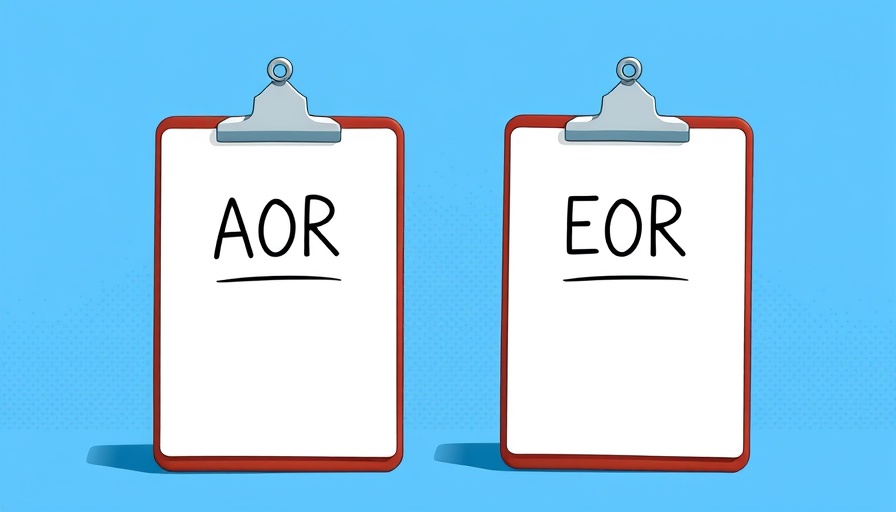
Understanding AOR and EOR: Essential Definitions
As businesses expand their operations internationally, understanding the distinctions between an Agent of Record (AOR) and an Employer of Record (EOR) is increasingly crucial. Both AOR and EOR services assist in navigating the complexities of hiring outside your home country, but they serve different purposes depending on your workforce structure. An AOR manages independent contractors while ensuring compliance and invoicing, allowing employers to retain control over freelancer relationships. Alternatively, an EOR becomes the legal employer of full-time or part-time employees, handling essential responsibilities like payroll and benefits on your behalf.
The Key Differences: A Breakdown
The fundamental differences between AORs and EORs can influence the operational decisions of business owners looking to scale. In essence:
- AOR: Primarily supports independent contractors, focusing on compliance and invoicing.
- EOR: Legally employs workers, managing aspects such as payroll, taxes, and benefits.
- Liabilities: With an AOR, the company retains significant liabilities regarding misclassification, whereas the EOR assumes these legal responsibilities.
- Cost Structure: AORs generally have lower fees that are usually flat, while EOR services are more expensive due to comprehensive employment services.
Why Choose An AOR or EOR?
Deciding between an AOR and EOR generally comes down to how an organization wishes to manage its talent. For those companies predominantly hiring international contractors for specific projects, an AOR can be advantageous. It adds necessary compliance without embedding the contractors into the organization's structure. However, for businesses wishing to establish a more integrated team of full-time employees in a foreign location but without the hassle of navigating local employment laws, an EOR becomes an attractive option.
Common Misconceptions About AORs and EORs
1. Only Large Businesses Need EORs: Many small to mid-sized companies benefit from EOR options as much as their larger counterparts, especially during expansion phases.
2. AORs are Less Reliable: While AORs are often viewed as supplementary services, they can provide strong compliance frameworks for contractors.
Use Cases: Tailoring Solutions to Your Business Needs
As organizations grow, they may find their employment needs evolving. For instance, a startup that started with freelancers working remotely may later require a permanent, dedicated team as the business secures funding. Understanding the nuances between AORs and EORs ensures that leaders can make informed decisions that bolster both compliance and business objectives.
Taking Action: Making Informed Workforce Decisions
When considering international hiring strategies, it’s essential to match your approach with your organizational goals. Use this understanding of AORs and EORs to assess your current business needs and decide which option might best suit your workforce strategy moving forward.
 Add Row
Add Row  Add
Add 



Write A Comment